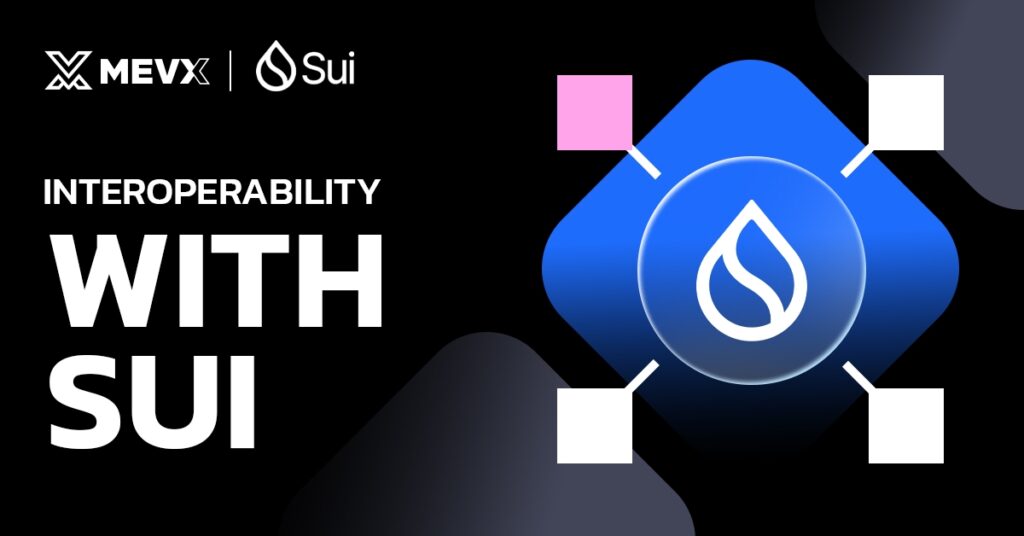The crypto space isn’t limited to one chain anymore. Projects launch on Ethereum, tokens explode on Solana, and stablecoins move across dozens of networks. If you’re active in Web3, you’ve probably found yourself needing to move assets from one chain to another. That’s where interoperability comes in, and for users in the Sui ecosystem, it’s powered by the SUI Bridge.
Let’s break down how the SUI Bridge works, what it supports, and why interoperability with SUI matters for anyone building or trading in a multi-chain world.

What Is Interoperability with SUI?
In simple terms, interoperability with SUI means the ability to move tokens from other blockchains into the Sui network, and back out again. Whether you’re holding ETH, USDC, or WBTC on Ethereum, you can bring those tokens into Sui, use them in apps, and later bridge them back if needed.
This works through a combination of two systems:
- The SUI Bridge for native support (especially Ethereum-based assets)
- Wormhole Connect for wider access to over 20 chains including Solana, BNB Chain, and Avalanche
Together, they allow users to interact with Sui without starting from scratch.
Meet the SUI Bridge
The SUI Bridge is built directly into the Sui blockchain infrastructure. That means it’s not a third-party plugin or external tool; it runs on the same validator set that powers the Sui network itself. This adds a layer of trust and decentralization.

When you use the bridge, here’s what happens:
- You lock your tokens on the source chain (e.g., ETH on Ethereum)
- A wrapped version of the same token is minted on Sui
- Later, if you bridge back, the Sui version is burned, and the original is unlocked
This process ensures that the total supply stays in balance across chains.
What Can You Bridge?
At the moment, the SUI Bridge supports:
- ETH (native Ethereum)
- WETH (wrapped Ethereum)
- WBTC (wrapped Bitcoin)
- USDC and USDT (stablecoins)
Transfers are available both ways, from Ethereum to Sui and from Sui to Ethereum. That flexibility lets you enter and exit whenever you want, without relying on centralized exchanges.
Here’s a quick look at some of the assets:
| Token | Purpose |
| ETH | Native Ethereum token |
| USDC | Dollar-pegged stablecoin |
| WBTC | Wrapped version of Bitcoin |
| WETH | ERC-20 wrapped ETH, useful for smart contracts |
Limits and Pricing
To manage risk and protect users, the SUI Bridge uses both global limits and per-token limits. These limits are updated regularly and based on validator votes.
As of now:
- You can bridge up to $16 million daily from Ethereum to Sui
- And $7 million from Sui back to Ethereum
Each token also has a minimum transfer size. For example, ETH needs to be above a tiny decimal value due to rounding behavior on smart contracts.
In terms of pricing, Sui uses a fixed cost model. Bridging 1 ETH might use around $2,600 worth of the bridge’s daily limit, depending on ETH price. It doesn’t charge dynamic gas fees like Ethereum does, which keeps things more predictable for users.
Wormhole Connect: Go Beyond Ethereum

If you’re coming from Solana, Avalanche, or any other chain outside Ethereum, you’ll want to use Wormhole Connect. This tool supports over 22 networks and plugs directly into the Sui experience.
You don’t have to bounce around dApps or manage multiple wallets. Just use Wormhole Connect inside a compatible app or via the Wormhole website. It handles everything from UI to transfers, and even drops a bit of SUI into your wallet on arrival (to cover gas fees).
Key features:
- Pay-once relay: Just pay gas on the source chain
- Drop-off option: Adds SUI automatically so you’re not stuck
- Cross-chain simplicity: No need to leave the app
Wormhole makes interoperability with SUI more user-friendly, especially for newcomers.
Why It Matters for Users and Developers
If You’re a Trader:
- Move assets into Sui without needing centralized exchanges
- Use Ethereum-based tokens in Sui-native DeFi apps
- Exit back to Ethereum when you’re done
If You’re a Builder:
- Accept bridged tokens in your dApp
- Use Wormhole Connect to onboard users from other chains
- Build Sui-native tools that interact with global liquidity
Sui isn’t just building its own world, it’s making it easy for the rest of Web3 to plug in.
Final Thoughts
Interoperability isn’t a luxury anymore. It’s a requirement. The more fragmented Web3 becomes, the more important it is to connect the dots. The SUI Bridge, along with Wormhole integration, makes sure Sui is part of that conversation.
If you’re looking to build or trade on Sui, and you already hold assets elsewhere, you don’t need to start over. Just bridge in, use what you need, and bridge out when you’re ready.
Read more SUI articles on the MevX Blog!
Share on Social Media:
